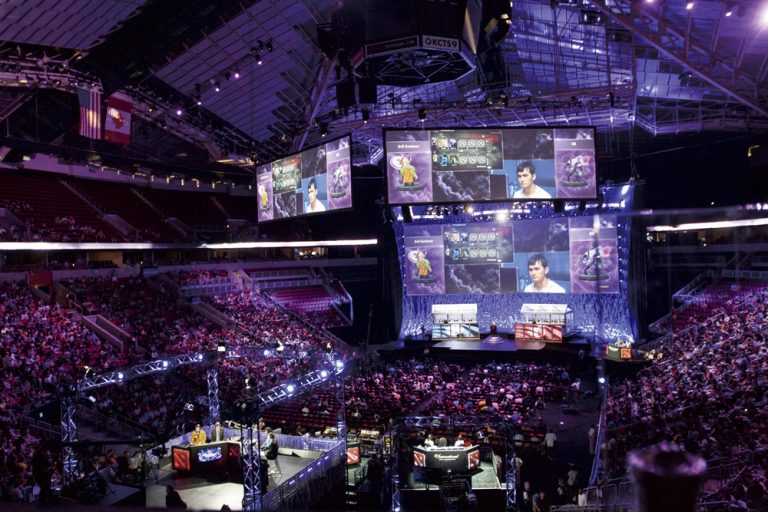
Matthew Lee
Staff Writer
On October 3rd, Alex Sunderhaft, a professional Starcraft 2 player who goes by the username “Neeb” took first place at the KeSPA Cup, a prestigious South Korean Starcraft 2 tournament. Neeb made eSports history that day, as he became the first non-Korean to win a South Korean Starcraft 2 tournament in 16 years.
Similarly, this season’s League of Legends World Championship matchups have been refreshed. Korean teams are not dominating this international clash, instead being humbled by North American and European teams, regions labelled as eSports underdogs. There is clearly a shift in momentum this year from the historically dominating Korean players and everyone else. This brings up two questions: How did South Korea establish such a dominating presence in the eSports scene and what happened to the once-unstoppable stronghold that South Korea once held there?
Starcraft, a real-time strategy, sci-fi military game, is known to many as the father of eSports. It was arguably the first PC game that garnered a vast audience on television and online in South Korea, starting as far back as the late 1990s. The game brought in tons of viewers, followed by money from corporate sponsors.
As the money and popularity poured in, the prize pool for large tournaments grew exponentially. Starcraft teams took training seriously, with players practicing strategies and scrimmages for 16 hours a day in some cases. Pro gaming evolved from a money making hobby to an actual job; a job that could make you rich if you were skilled enough.
Although Starcraft’s popularity in the Americas or Europe did not reach these kinds of heights, the fact that it brought eSports to the mainstream gaming scene established a precedent that would later extend beyond the realm of video games: that eSports could be taken as seriously as traditional sports.
Starcraft 2, the long-awaited sequel to the original Starcraft, surged in popularity soon after its release in 2010, infecting not only South Korea, but also Europe and the Americas. It became one of the top attractions in the Western eSports scene. Starcraft 2’s popularity laid the foundation for mainstream eSports in the American and European regions.
However, the years of experience that South Korean players had accumulated over the newer European players showed in tournament results; South Koreans dominated the majority of Starcraft tournaments, such as Dreamhack and Homestory Cup, two of the most popular non-Korean eSports arenas.
When League of Legends started growing in fame in 2011-2012, the story was the same. The gaming empire that South Korea had worked hard to established 10+ years ago began to bear results, made evident by Korean teams winning or being the final two teams in 4 out of 5 League of Legends World Championships so far.
Recently the eSports king has seemingly lost control of the throne. Although Neeb’s victory isn’t a total shift in power to the Western region, it is certainly a surprise, reflecting the Western threat that has failed to phase the Koreans for so long. Former League of Legends World Champions “Samsung Galaxy” were utterly destroyed by North American team TSM. The current standings show that Chinese, Taiwanese, North American, and Russian teams are going head-to-head with Korean teams and giving them a run for their money.
These upsets and unforeseen victories are the results of two factors. First, other regions are clearly stepping it up. Mainstream eSports has caught on in popularity – North American teams are sponsored by big corporate names such as Nissan, Snapdragon, Kingston HyperX, and HTC.
Second, many Korean teams’ rosters are left scattered, as the country functions like a factory for new eSports talents. Many Korean pro gamers are young (usually ages 16-21), meaning that they are conscripted for South Korea’s mandatory military service, putting their eSports career on pause. Fortunately, the region constantly scouts for new talent. A high ranking on the region ladder may land players a job offering.
Another reason for the breakup of Korean teams are opportunities abroad. Although Korea has a high demand for talented players, the country also contains many candidates for those positions. In other regions, the demand for talented eSports athletes is not met and therefore a star Korean player may be able to earn more money and job security by traveling abroad. An example of this case is “Cloud 9’s Impact,” a former season three world champion who changed allegiances from South Korea to North America. They are still competing for the world championship this year.
The case study of the eSports scene in two of the most influential games of this generation hints that this is the end of the era of Korean domination in eSports. With all ends come new beginnings, and this may be the start of new competition – not only for the League of Legends and Starcraft 2 scene, but also for other games such as Overwatch, CS:GO, or DoTA 2.










